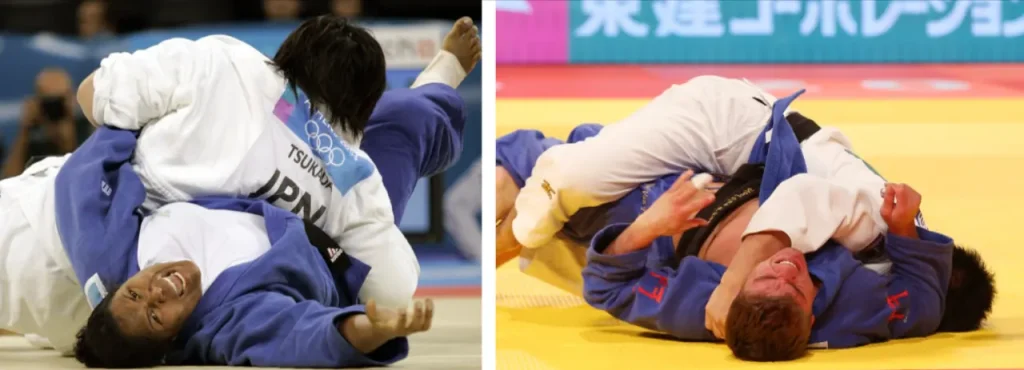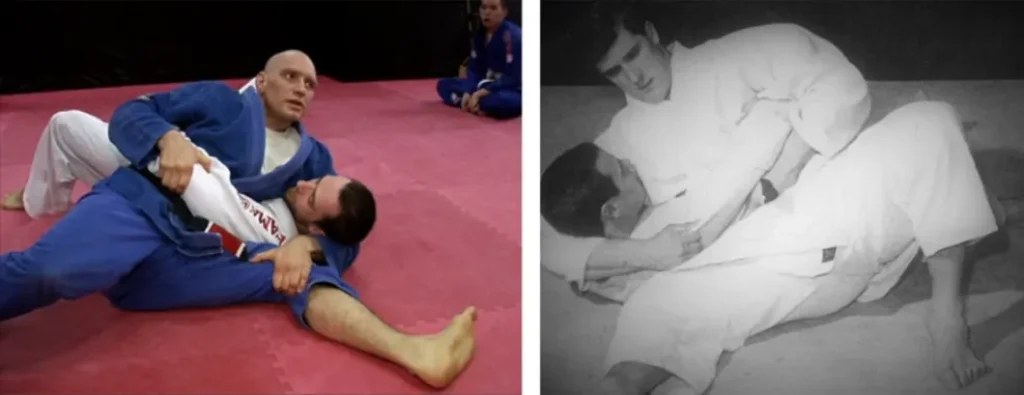Judo Holds Names: A Guide to the Holding Methods in Judo
Judo is a martial art that originated in Japan in the late 19th century. The man credited with creating the sport, Jigoro Kano, was inspired by the principles of jujitsu.
He believed that judo was not just a method of self-defense but a philosophy that could be applied to all aspects of life.
Today, judo is an Olympic sport enjoyed by people worldwide.
Its techniques are based on the principle of using an opponent’s strength against them. Unlike other martial arts which focus on strikes or kicks, judo uses throws, pins, and joint locks to control and immobilize an opponent.
There are three main types of techniques used in judo:
- nage-waza (throwing techniques)
- katame-waza (grappling techniques)
- and atemi-waza (striking techniques).
Within these categories are various subcategories such as Osae-komi holds, Kuzure-Kami-Shiho-Gatame holds, Tate-Shiho-Gatame holds, and many more.
These different techniques each serve a specific purpose within the art of judo and require both mental and physical training to execute effectively. In this article, we will explore one particular aspect of these grappling techniques – judo holds names that belong to the katame-waza or grappling techniques type in judo.
What is a Hold in Judo?
Judo is a martial art that originated in Japan in the late 19th century.
It consists of throws, takedowns, and grappling techniques aimed at subduing an opponent.
One of the essential components of judo are the holds – Osaekomi-waza. A hold is a technique used to control or immobilize an opponent on the ground.
How long do you have to pin someone in Judo?
In judo matches, a hold-down (grappling) can secure victory if held for 20 seconds or until submission by the opponent. In this way, the judo holds can be attributed to judo submission holds as well as they can lead to victory in the match.
Judo holds are not only significant in winning matches but also in self-defense situations where one needs to pin down an attacker before seeking help or applying other techniques.
There are various types of holds in judo. Each type has its own unique characteristics that make it effective in different situations.
Definition of a Hold and Its Importance
A hold is a grappling technique (katame-waza) used to immobilize, control, or simply pin down an opponent on the ground.
It involves locking one’s body part like arms or legs around their opponent’s body parts like arms or neck while simultaneously applying pressure to restrict movement.

Judo moves that are called holds are integral to judo as they allow for controlling your opponent without causing injury while conserving energy for more complex techniques like throws and submissions.
In addition, pins enable a judoka (a person practicing judo) to score points during competitions when holding down their opponent for more than 20 seconds.
How Many Judo Holds Are There?
When it comes to judo, the concept of a hold is crucial. A hold is used to immobilize an opponent on their back, and it is a fundamental skill for any serious judoka.
What is Osaekomi?
In traditional Kodokan Judo, which is the most widely recognized style of judo, there are a total of 10 main judo holds techniques that belong to the Osaekomi-waza (holds or pins) – the subdepartment of Katame-waza (grappling techniques).
The 10 judo hold down names are:
Judo holds names: How many holds are there in judo?
| Technique | English Translation |
|---|---|
| Kesa-gatame (袈裟固) | Scarf hold |
| Kuzure-kesa-gatame (崩袈裟固) | Broken scarf hold |
| Ushiro-kesa-gatame (後袈裟固) | Reverse scarf hold |
| Kata-gatame (肩固) | Shoulder hold |
| Kami-shiho-gatame (上四方固) | Upper four quarter hold down |
| Kuzure-kami-shiho-gatame (崩上四方固) | Broken upper four quarter hold down |
| Tate-shiho-gatame (縦四方固) | Vertical four quarter hold |
| Yoko-shiho-gatame (横四方固) | Side four quarter hold |
| Ura-gatame (裹固) | Ura gatame is a valid competition technique (as of 1/1/2014) |
| Uki-gatame (浮固) | Floating hold |
There are also some unrecognized judo holds techniques such as Ura-kesa-gatame and Sangaku-Gatame.
What are the two holding methods in judo?
Although there are ten and some more judo holds, still there are hold techniques that are recognized as most common or utilized more frequently.
If you want to single out just the two holding methods in judo from the rest, it can be Kesa Gatame and Kami shiho gatame.
But it doesn’t devalue or put on the background other Osaekomi-waza holds.
Each judo hold is an entire complex of judo moves that serve specific purposes and situations.
Among the other judo holds are:
Kuzure-Kami-Shiho-Gatame
This translates as “collapse” and means “modified upper four-quarter hold” and involves maintaining an opponent’s arm in place while controlling their body’s movements.
Tate-Shiho-Gatame
This means “vertical four-quarter hold” and involves using your body weight to immobilize your opponent by applying pressure on the chest or stomach, among other areas.
Each of these holds is suitable for different situations, depending on the opponent’s strengths and weaknesses.
Knowing how to apply each hold correctly can mean the difference between winning or losing a match.
What is the Kesa Gatame position?
It is one of the most popular holding positions beyond the judo sport and one of the most performed basic judo techniques due to its effectiveness.
Kesa-gatame
This translates to “scarf hold” and involves wrapping one arm around your opponent’s neck while the other controls their torso.
Kesa Gatame is a dominant position in judo and BJJ that can give you a solid advantage over your opponent. It is also known as a side control hold in grappling.
Imagine this: you’re in a match, and you’ve managed to secure a firm hold around your opponent’s head and arm. That’s Kesa Gatame! You have seen it many times on the mats.
It’s also known as the scarf hold because it resembles wrapping a scarf around someone.

In Kesa Gatame, you essentially control your opponent’s upper body while pinning them to the ground. Your body is positioned diagonally across their chest, with your arm under their head and your other arm securing their arm on the opposite side.
This locks them in place and restricts their movement, giving you an upper hand to transition into other techniques or maintain control for a victory.
While Kesa Gatame originated in judo, it has also found its way into BJJ. BJJ practitioners value the position for its effectiveness in controlling opponents and setting up submissions.
It’s a versatile technique that can be utilized both in competitions and self-defense scenarios.
In BJJ, Kesa Gatame is often used as a stepping stone to advance to more dominant positions like mount or back control.
Skilled grapplers have even developed various adjustments and transitions from Kesa Gatame to keep their opponents guessing and create opportunities to submit them.
Escaping from Osaekomi Holds: How To Get Out Of A Tight Spot
While being pinned down by an Osaekomi hold can be frustrating and demoralizing for any judoka, there are certain techniques that can help you escape this situation successfully.
One such technique involves using leverage against the person applying the hold by shifting their weight off balance.
Another technique involves using your own body to twist and roll out of the hold. When trying to escape from an Osaekomi hold, it is important to remain calm and focused.
Panic will only make it harder for you to get out of the hold.
Instead, try to assess the situation and identify any weaknesses in your opponent’s grip or positioning that you can exploit.
Kesa-gatame Escape
There are several ways that you can train specifically for escaping Osaekomi holds, such as drilling specific escape techniques with a partner or practicing solo drills that focus on developing core strength and flexibility.
By working on your ability to escape holds, you can become a more well-rounded judoka and better prepare yourself for competition.
Conclusion
By mastering basic judo holds or judo advanced techniques from the Osaekomi-waza, you can gain greater control over your opponent and increase your chances of success in a competition or self-defense situation.
However, it’s important to remember that these holds should only be used in appropriate situations and with proper technique to avoid causing serious injury.
With practice and dedication, anyone can learn to apply and escape from the judo holds effectively.